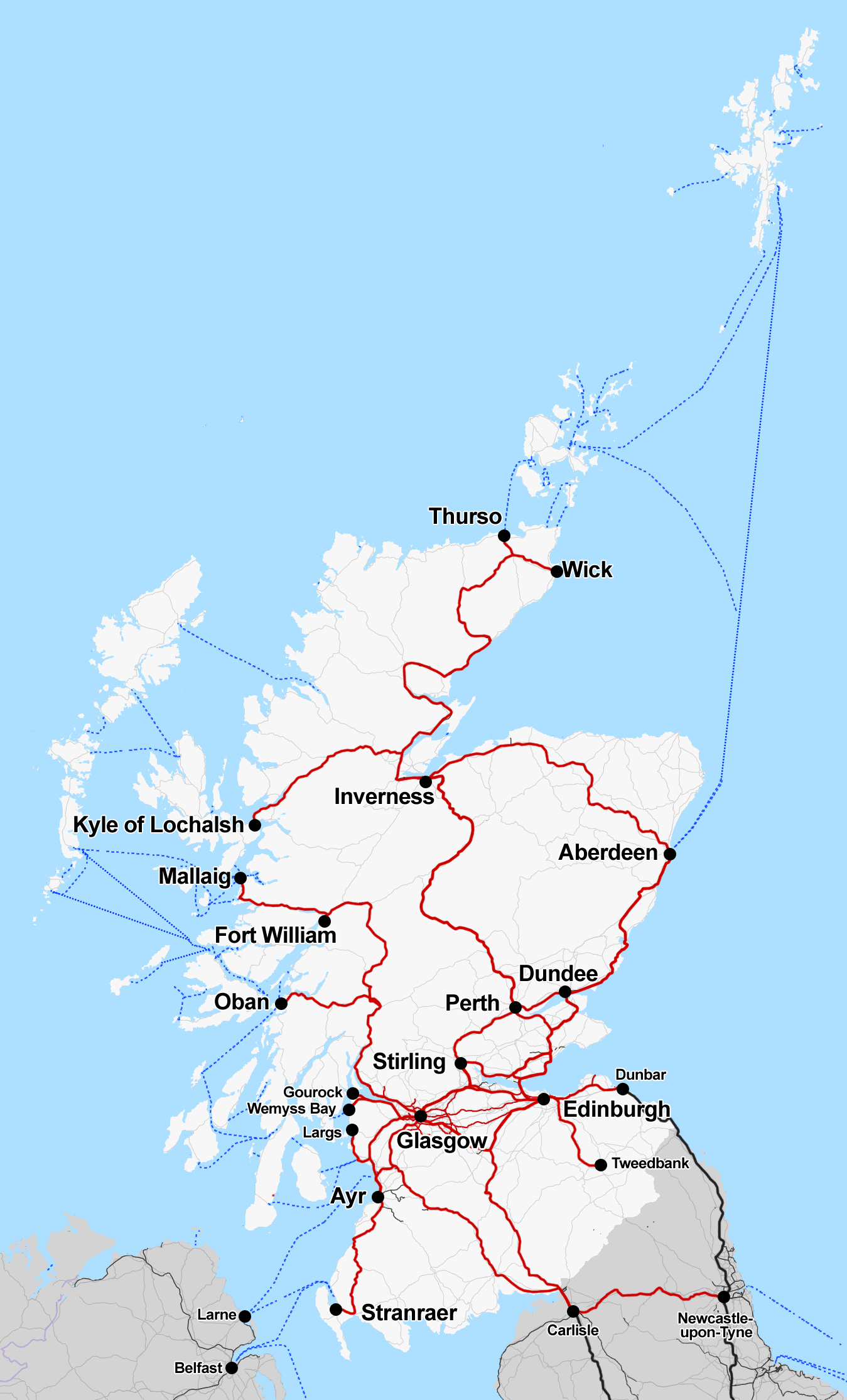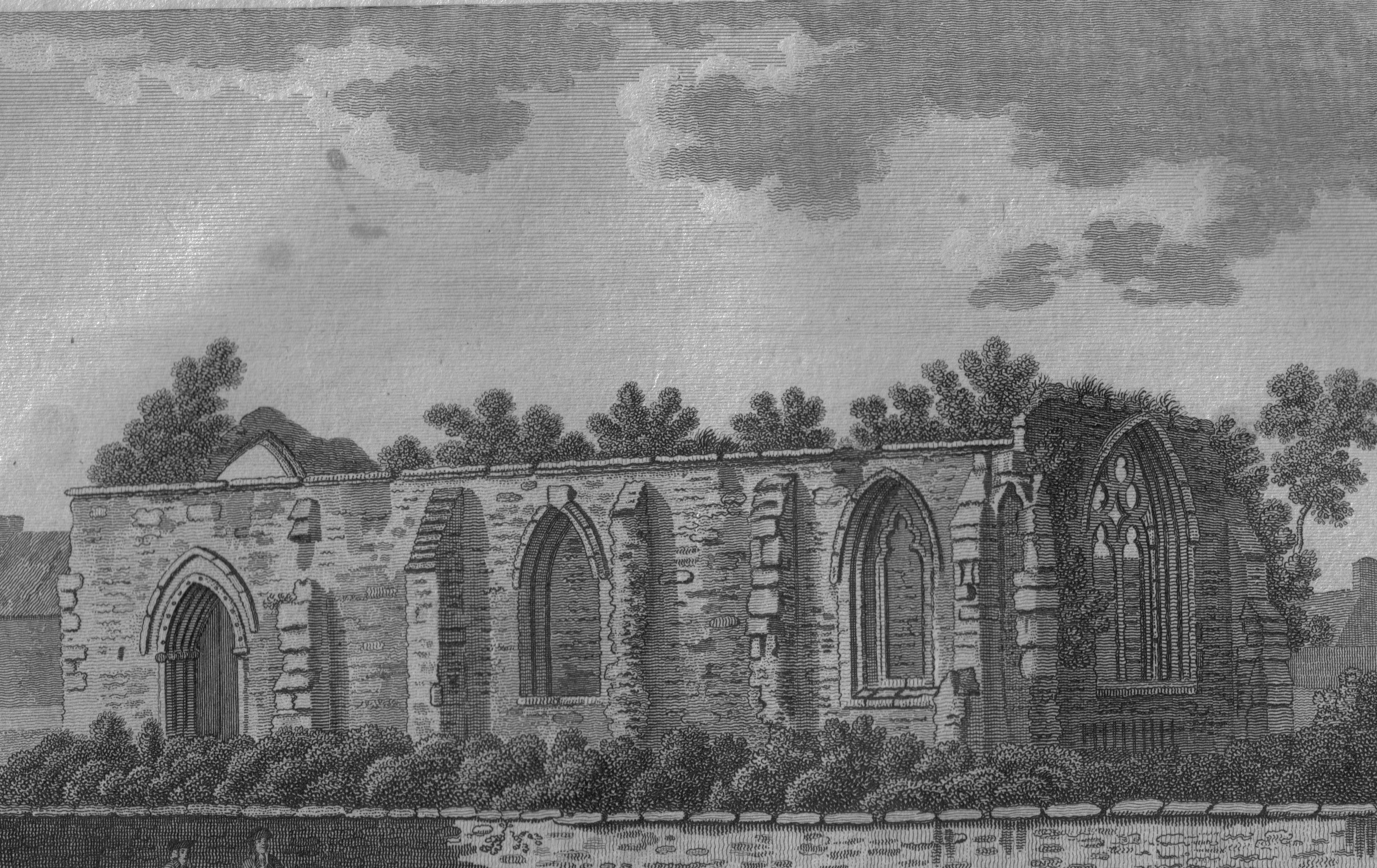|
Killochan Railway Station
Killochan railway station was located in a rural part of South Ayrshire, Scotland and mainly served the nearby Killochan Castle estate. The Killochan bank is the name given to this section of the line, running from Girvan on an uphill gradient to just north of the old station site. Maybole is around nine miles away and Girvan two miles. History Opened to serve the Killochan Castle estate and surrounding population in 1860Butt (1995) page 132 by the Maybole and Girvan Railway it closed in 1951. before the era of the Beeching cuts. Killochan Colliery (aka Bargany Pit), Craigie No. 1 Section, Parish of Dailly was still working up until the 1970s and had a coal washing plant that was used to treat coal from the other pits in the valley. A station solely for the use of miners was located at Bargany, known as Bargany Colliery Platform, opened at an unrecorded date and closed in July 1926. Grangeston Halt railway station was located nearby as a private facility used by staff from t ... [...More Info...] [...Related Items...] OR: [Wikipedia] [Google] [Baidu] |
Dailly
Dailly ( gd, Dail Mhaol Chiarain) is a village in South Ayrshire, Scotland. It is located on the Water of Girvan, south of Maybole, and east of Old Dailly. "New Dailly", as it was originally known, was laid out in the 1760s as a coal-mining village. In 1849 a fire broke out in Maxwell Colliery, one of the nearby mines, and continued to burn for 50 years. Notable people *Thomas Thomson FRSE (1768-1852) antiquary and friend of Walter Scott * Hamilton Paul (1773–1854), Presbyterian minister, poet and writer *Thomas's younger brother, John Thomson of Duddingston FRSE (1778 – 1840) minister at Dailly 1800-1805 and artist *Hew Ainslie (1792–1878), poet * Anne Hepburn, missionary was born here in 1925Thanksgiving Service for the life of Anne Hepburn rder of Service Motherhood of God Papers, New College Library. (Mrs Hepburn's papers relating to the Motherhood of God Controversy were donated to New College Library in 2016). *Tommy Lawrence, footballer *Ross McCrorie, footballer ... [...More Info...] [...Related Items...] OR: [Wikipedia] [Google] [Baidu] |
Grangeston Halt Railway Station
The Grangeston Halt railway station was a private station that was not listed in the public timetables, located in a rural part of South Ayrshire, Scotland and served the WWII Grangeston ICI munitions plant bringing workers to the site. Grant's Distillery now occupies much of the site. History Where Grant's Distillery is now at Grangeston in WWII was an ICI munitions factory producing flashless cordite that was served by sidings from the Maidens and Dunure line which joined at a north facing junction. The Grangeston depot was also served by a passenger facility named Grangeston Halt that was located on the Maybole and Girvan Railway line and closed in 1965. "''At the onset of the Second World War (1939-1945), the British Government decided to massively expand its capability to produce explosives for filling shells and as propellant for gun and rifle cartridges. Instead of creating another giant factory like the First World War (1914-1918) munitions works at Gretna and East ... [...More Info...] [...Related Items...] OR: [Wikipedia] [Google] [Baidu] |
Railway Stations In Great Britain Opened In 1860
Rail transport (also known as train transport) is a means of transport that transfers passengers and goods on wheeled vehicles running on rails, which are incorporated in tracks. In contrast to road transport, where the vehicles run on a prepared flat surface, rail vehicles (rolling stock) are directionally guided by the tracks on which they run. Tracks usually consist of steel rails, installed on sleepers (ties) set in ballast, on which the rolling stock, usually fitted with metal wheels, moves. Other variations are also possible, such as "slab track", in which the rails are fastened to a concrete foundation resting on a prepared subsurface. Rolling stock in a rail transport system generally encounters lower frictional resistance than rubber-tyred road vehicles, so passenger and freight cars (carriages and wagons) can be coupled into longer trains. The operation is carried out by a railway company, providing transport between train stations or freight customer facil ... [...More Info...] [...Related Items...] OR: [Wikipedia] [Google] [Baidu] |
Glasgow South Western Line
The Glasgow South Western Line is a mainline railway in Scotland that runs from Glasgow to Kilmarnock, and then either via Dumfries, or Stranraer via Ayr, with a branch to East Kilbride. History The line was built by several railway companies during the 19th century: * 1812 - Kilmarnock to Barassie by the Kilmarnock and Troon Railway * 1839 - Barassie to Ayr (Falkland Junction) by the Glasgow, Paisley, Kilmarnock and Ayr Railway * 1848 - Strathbungo to Neilston by the Glasgow, Barrhead and Neilston Direct Railway * 1848 - Kilmarnock to Cumnock opened by the Glasgow, Paisley, Kilmarnock and Ayr Railway * 1848 - Gretna Junction to Carlisle by the Caledonian Railway * 1850 - Cumnock to Gretna Junction opened by the Glasgow, Dumfries and Carlisle Railway * 1856 - Ayr (Falkland Junction) to Maybole (Dalrymple) Junction by the Ayr and Dalmellington Railway * 1856 - Maybole (Dalrymple) Junction to Maybole by the Ayr and Maybole Junction Railway * 1860 - Maybole to Girvan by the M ... [...More Info...] [...Related Items...] OR: [Wikipedia] [Google] [Baidu] |
ScotRail
ScotRail Trains Limited, trading as ScotRail ( gd, Rèile na h-Alba), is a Scottish train operating company that is publicly owned by Scottish Rail Holdings on behalf of the Scottish Government. It has been operating the ScotRail franchise as an operator of last resort since 1 April 2022. History The ScotRail network had since 2015 been operated by the private-sector franchisee Abellio ScotRail. In December 2019, Transport Scotland announced Abellio had not met the performance criteria necessary to have its seven-year franchise extended for a further three years, and the franchise would conclude on 31 March 2022. In March 2021, Transport Scotland announced that the franchise would not be re-tendered for another private-sector operator to run, but would be operated by an operator of last resort owned by the Scottish Government.ScotRail to be Nationalised ''Rail Express'' issue 300 May 2021 page 6 The move was welcomed by the ASLEF, RMT and TSSA unions. The Minister for Tra ... [...More Info...] [...Related Items...] OR: [Wikipedia] [Google] [Baidu] |
Clan Cathcart
Clan Cathcart is a Lowland Scottish clan. History Origins of the Clan The lands of Cathcart are named after the River Cart in Renfrewshire. ''Caeth-cart'' means the ''strait of Cart''. Rainaldus de Kethcart appears to have been the progenitor of the family. In 1178 he was witness to a charter of the king's steward to Paisley Abbey. His son was William de Kethcart who was a witness to a charter in about 1200, exchanging the lands of Knoc near Walkinshaw with the Abbey of Paisley. In 1234 a charter of resignation of the lands of Culbeth to the Abbot of Paisley was sealed by Alan de Cathcart. Wars of Scottish Independence Alan de Cathcart's son, William de Cathcart, was one of the Scottish barons who submitted to Edward I of England and is listed on the Ragman Rolls of 1296. William was succeeded by Alan de Cathcart who was a staunch supporter of king Robert the Bruce in cause of Scottish independence. He followed the king's brother, Edward Bruce and was among a party of just fi ... [...More Info...] [...Related Items...] OR: [Wikipedia] [Google] [Baidu] |
Cassillis Railway Station
Cassillis railway station was a train station, railway station serving the village of Minishant, South Ayrshire, Scotland. The station was originally part of the Ayr and Maybole Junction Railway (and later the Glasgow and South Western Railway). History The station opened on 13 October 1856,Butt, p. 55 and closed 6 December 1954. The station was named after nearby Cassillis House, and consisted of two side platforms and a moderate sized station building. Since closure both platforms have been removed (and the line singled), however the station building remains intact as a private residence. References Notes Sources * Disused railway stations in South Ayrshire Railway stations in Great Britain opened in 1856 Railway stations in Great Britain closed in 1954 Former Glasgow and South Western Railway stations {{Scotland-railstation-stub ... [...More Info...] [...Related Items...] OR: [Wikipedia] [Google] [Baidu] |
Maybole
Maybole is a town and former burgh of barony and police burgh in South Ayrshire, Scotland. It had an estimated population of in . It is situated south of Ayr and southwest of Glasgow by the Glasgow and South Western Railway. The town is bypassed by the A77 road, A77. History Maybole has Middle Ages roots, receiving a charter from Donnchadh, Earl of Carrick in 1193. In 1516 it was made a burgh of regality, although for generations it remained under the suzerainty of the Kennedy clan, Kennedys, afterwards Earl of Cassillis, Earls of Cassillis and (later) Marquess of Ailsa, Marquesses of Ailsa, the most powerful family in Ayrshire. The Archibald Angus Charles Kennedy, 8th Marquess of Ailsa, Marquess of Ailsa lived at Cassillis House, just outside Maybole until its sale in 2007. In the late seventeenth century, a census recorded Maybole was home to 28 "lords and landowners with estates in Carrick and beyond." In former times, Maybole was the capital of the district of Carr ... [...More Info...] [...Related Items...] OR: [Wikipedia] [Google] [Baidu] |
Girvan
Girvan ( gd, Inbhir Gharbhain, "mouth of the River Girvan") is a burgh and harbour town in Carrick, South Ayrshire, Scotland. Girvan is situated on the east coast of the Firth of Clyde, with a population of about 6,450. It lies south of Ayr, and north of Stranraer, the main ferry port from Scotland to Northern Ireland. Deriving its name from the river which runs through the landscape the etymology of Girvan has possible Brythonic origins, related to the Welsh: ''Gearafon'' or ''Gwyrddafon'', "river flowing through the green flourishing place, from afon or avon, a river, and Gwyrdd, green, flourishing"). Prehistory and archaeology The earliest evidence of human habitation in the Girvan area dates to the Mesolithic. Between 1996 and 1998, archaeological investigations were undertaken by GUARD archaeology (then part of the University of Glasgow) as part of an expansion of the William Grant & Sons distillery. This work discovered several burnt mounds that dated to the lat ... [...More Info...] [...Related Items...] OR: [Wikipedia] [Google] [Baidu] |
Killochan Castle
Killochan Castle is a 16th-century L-plan tower house about north east of Girvan, South Ayrshire, Scotland, north of the Water of Girvan, and south of Burnhead.Coventry, Martin (2001). ''The Castles of Scotland''. Musselburgh: Goblinshead. p. 223 The castle is well-preserved and occupied. It has been a Grade A Listed building since 1971. History From the 14th century the Cathcart family owned the property. Robert Cathcart of Killochan died at the battle of Flodden in 1513. When the Kennedys of Cassillis and Bargany feuded the Cathcarts supported their Bargany neighbours, with John Cathcart, who built the castle, commanding the rearguard at the battle of Pennyglen. The present castle, dating from 1581, probably replaces an earlier one on the same, or a nearby, site. A wing and two extra floors were added to the tower in 1586 by Jhone Cathcart. Some outbuildings were demolished during the 18th century and "a beautifully proportioned new wing, courtyard and gatehouse" were added ... [...More Info...] [...Related Items...] OR: [Wikipedia] [Google] [Baidu] |




